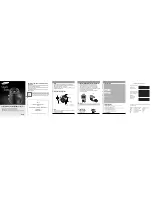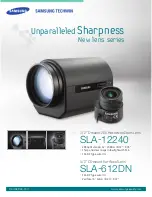
11
Always keep your lenses completely immersed in a recommended disinfecting/conditioning solution when the
lenses are not being worn. If you discontinue wearing your lenses, but plan to begin wearing them again after a few
weeks, ask your eye care practitioner for a recommendation on how to store your lenses.
NOTE: FluoroPerm
®
/ HDS
®
contact lenses cannot be heat (thermally) disinfected.
5.
Care of Your Lens Case
Contact lens cases can be a source of bacteria growth. After removing your lenses from the lens case, empty and
rinse the lens storage case with solution(s) recommended by the lens case manufacturer; then allow the lens case to
air dry. When the case is used again, refill it with fresh disinfecting solution. Lens cases should be replaced at
regular intervals as recommended by the lens case manufacturer or your eye care practitioner.
6.
Lubricating/Rewetting
Your eye care practitioner will recommend a lubricating/rewetting solution. Lubricating/Rewetting solutions can be
used to rewet (lubricate) your lenses while you are wearing them to make them more comfortable.
Lens Deposits And Use Of Enzymatic Cleaning Procedure
Enzyme cleaning may be recommended by your eye care practitioner. Enzyme cleaning removes protein deposits
on the lens. These deposits cannot be removed with regular cleaners. Removing protein deposits is important for
the well-being of your lenses and eyes. If these deposits are not removed, they can damage the lenses and cause
irritation.
Enzyme cleaning does not replace routine cleaning and disinfecting. For enzyme cleaning, you should carefully
follow the instructions in the enzymatic cleaning labeling.
Care For A Sticking (Nonmoving) Lens
If the lens sticks (stops moving) or cannot be removed, you should apply 5 drops of the recommended lubricating or
rewetting solution directly to the eye and wait until the lens begins to move freely on the eye before removing it. If
nonmovement of the lens continues after 30 minutes, you should IMMEDIATELY consult your eye care
practitioner or attending hospital emergency room physician.
EMERGENCIES
If chemicals of any kind (household products, gardening solutions, laboratory chemicals, etc.) are splashed into your
eyes, you should:
•
FLUSH YOUR EYES IMMEDIATELY WITH TAP WATER.
•
REMOVE YOUR LENSES.
•
IMMEDIATELY CONTACT YOUR EYE CARE PRACTITIONER OR VISIT A HOSPITAL EMERGENCY
ROOM WITHOUT DELAY.
WEARING SCHEDULE
THE WEARING SCHEDULE SHOULD BE DETERMINED BY THE EYE CARE PRACTITIONER. People
tend to overwear contact lenses initially. It is important to adhere to the initial wearing schedule and never wear
your lenses beyond the maximum recommended hours. Regular checkups, as determined by the eye care
practitioner, are also very important.
The maximum suggested wearing times for FluoroPerm
®
/ HDS
®
rigid gas permeable contact lenses with
Tangible
™
Hydra- PEG are indicated in the following tables.




















